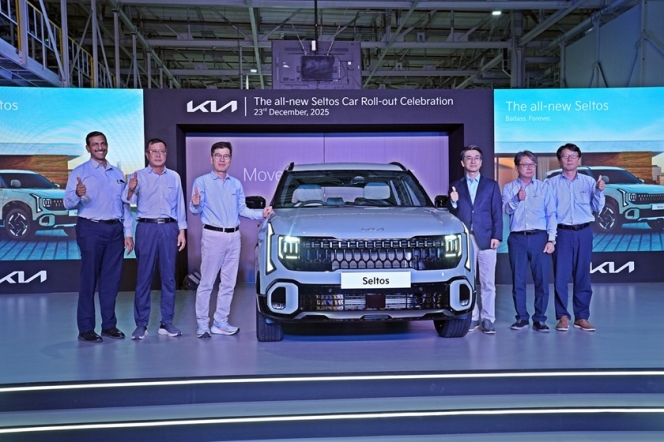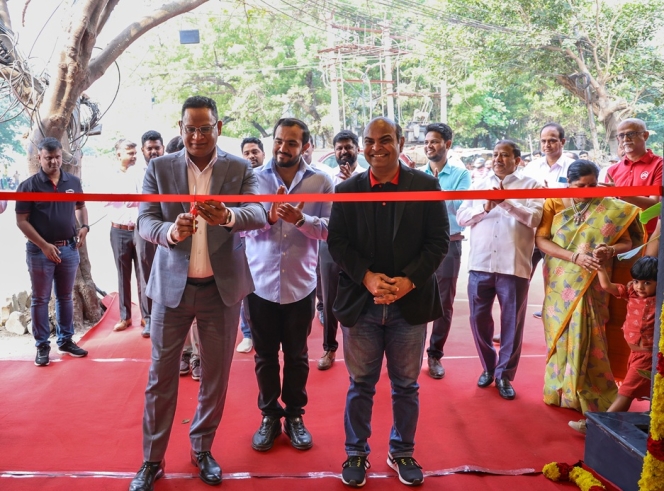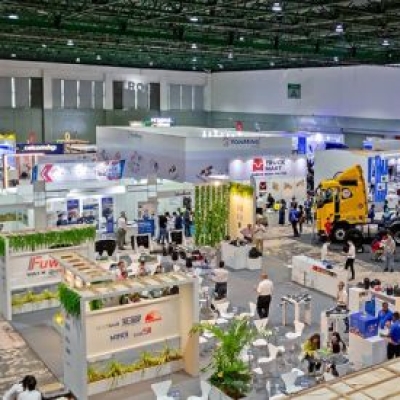
With the exciting range of autos being offered in the Indian market, the question that is being increasingly asked is about the pricing. Are Indian cars overpriced? Ravi Shankar from Chennai said that his plan to upgrade to a new car from his current stead – a 2013 model Volkswagen Polo GT TSI – threw some weird challenges. “The Hyundai Alcazar with a starting price of INR 1,700,000 and Skoda Kushaq with a starting price of INR 1,700,000 lakh look overpriced. Considering the fact that localisation has gained since I bought my Polo, the car prices should go down rather than go up. My Polo, with an imported TSI engine and a DSG transmission, cost INR 930,000 lakh. The Polo GT TSI on offer today is priced at INR 1,174,000 approximately in Chennai,” said Ravi. He added, “Should the price not go down rather than go up?” Mahesh Murthy from Bangalore said that he has postponed his plan to upgrade from his 2012 Punto. He finds the current car prices exorbitant.

A car dealer from Delhi expressed on the condition of not revealing his name that the interpretation or inference of a product being overpriced lies with the buyer. Cars today offer more creature comforts, safety and powertrain combinations, he said. This should justify their price, he added. Stating that a sub-four metre car costing close to or more than INR 1,500,000 is discomforting, Vikram Jagtap of Pune said that cars like these fit in a tax bracket that ensures a significant tax rebate. Asked if this was because of the regulations and features, he answered that the he is not certain if the addition of technologies and features like BS VI, airbags, ABS, ESP and EBD would lead to such a price escalation. Saikat from Kolkata averred cars like the Mahindra XUV300 and Tata Nexon offer among the best safety aspects if the preconception of buying a ‘big’ car at INR 1,500,000 is set aside. They offer a long list of safety features like seven airbags, ESP, ISOFIX seats, ABS, EBD, 5-Star GNCAP rating and more, he added.
Is it features?
Rohan Srivastava from Kanpur informed that the long list of features in today’s new cars is their differentiator as well as a catalyst for price increase. They, to an extent, justify the price increase. The other factors include inflation, which has in turn led to a jump in raw material prices, he added. Drawing attention to the near 40 percent jump in steel prices, which has affected his business, Srivastava said that some Indian car segments are reasonably priced. Srivastava drives a Hyundai. Neelkanth Sawant, a marketing professional from Pune, who drives a Maruti, said that car prices have kept pace with inflation. What failed to keep up with the pace are salaries in most jobs. “It is therefore that those looking to upgrade their cars seven-to-ten years down the line are finding it difficult to choose a new set of wheels costing 1.5 to two times more,” he added. Of the opinion that an INR 10,00,000 priced car of yesteryear lacked features like airbags, ABS, EBD, touchscreen, longer warranty coverage, parking sensors, auto wipers and head lamps, sun roof, climate control and connected car tech, an auto enthusiast from Hyderabad said that factor in inflation, and it is not illogical to have the current version of the same model cost INR 1,700,000.

Raveeraj from Bangalore averred manufacturers are pricing their autos as per the customer’s willingness to pay. The fact that most cars are well-equipped does not mean that they are overpriced, he added. Ajit Powar of Pune expressed cars in India tend to be overpriced than in many other markets of the world. They also tend to differ in quality, he quipped. Is it because laws concerning autos are perhaps not as strict as in the UK or the US? Powar could not provide a definitive answer. An industry observer stated that he has seen some companies practice a culture of using different materials in cars that they export. The grade of steel they use differs, the quality and thickness of paint they use differs and even the amount of insulation or features they offer is different, he said. This, he claimed, is done to address the stringent safety and other requirements of the export markets. In terms of emissions and safety, we lag behind the European and US markets, and yet the cars made in India are priced high. This has largely to do with the taxes and high cost of doing business, he explained. Ram Naresh of Hyderabad said that the TUV300 he bought in 2017 cost him INR 1,250,000 on road. On the top of it, he paid INR 250,000 as the loan interest. He spent around INR 50,000 on accessories. The total cost came to about INR 1,550,000. What he spent on diesel, service, spares, insurance etc. would amount to another INR 150,000 to INR two-lakh. Looking at upgrading to a new car, he is finding the prospect of spending INR 150,000 on a sub-four metre vehicle weird.

Inflation, weak Indian rupee, taxes, policies or greed?
Ram Naresh’s search of the low-end versions of cars has made him conclude that they are overpriced. “The Harrier XE, for example, is quite bare bone,” he said. “I have decided to postpone my decision to buy a new vehicle. I am now looking for a used car instead,” he added. Blaming inflation, weakening Indian rupee, the greed of automakers to make huge profits and the knee jerk reaction of authorities, Rohit from Indore said that it is high time cars are looked upon as a necessity and taxed accordingly. Bala from Chennai averred that tax policies have led to a great extent for cars to be highly overpriced. Electric cars are also not being spared, he rued. Look at the prices of electric cars and it does not look like the government is encouraging them, he quipped. Dev Tahalwani, who operates a three-wheeler, said that he finds the price of the new Mahindra Treo Zor electric three-wheeler high. And, if I avail finance, the cost is going further up, he complained. Expressing surprise over the recent EY survey report about buyers being ready to pay a premium of up to 20 percent, an industry source mentioned that the price of electric cars on offer in India is definitely high. The operating costs of such vehicles, their range, their reliability and their usability in terms of infrastructure are values that are yet not clear.
Checks and balances?
Of the opinion that law makers in US and Europe are far more aware and sensitive to the sentiments of buyers and the general public, an industry observer said that the situation in India has not matured as much. The level of checks and balances governing automakers in the US and Europe are simply not there, he added. Stating that inflation, depreciating Indian rupee, ever increasing taxes, availability of high tenure loans and stagnating incomes have already driven car prices to insane levels, Robin from Chennai mentioned that a good upgrade for a reasonable amount after four-to-five years is no longer in sight. Sanchit Chari from Bangalore said, “Taxes have remained the same for the last few years. When GST was rolled out, the rates were set to what the combination of pre-GST rates were (VAT, state taxes etc.). So, they are not the cause of price hikes. Their increase has been one-to-two percent, whereas the car prices have moved up by almost 30 to 50 percent during the same period.” “It needs to be investigated if the addition of safety and emission technologies as well as features would lead to an increase in prices to such a level,” he averred. Rajesh Tandel from Mumbai drew attention to the price escalation in some of the long running cars in India like the Toyota Innova. In 2005, the vehicle was launched at a starting price which was no more than INR seven lakh, he said. Today, he mentioned, the starting price of the same vehicle is no less than INR 1,600,000 lakh. An increase of INR eight-lakh for a product line that is not drastically different from that of 2005 is hard to grasp, he added.

A Delhi-based industry source expressed that the level of taxes on an automobile (there’s GST and a compensation cess of 48 percent, the enormous registration tax that is a state subject and continues to rise time and again), regulatory requirements and the cost of doing business are responsible for the costs rising so much and so often in at least the last one year. The average buying capacity of an Indian buyer has not risen in line, he informed. Explaining that INR 10,00,000 (roughly USD 13,000) is more or less the same amount of money incurred to develop a modern car – a compact SUV or a typical sedan – in comparison to other markets the world over, the source said that it is the tax component that needs to be looked at. Of the opinion that taxes would amount to a good portion of the prices paid to buy cars, Rohit remarked, “The increase in car prices is mainly due to base increases by manufacturers. Taxes are a percentage of base price and increase as the base price increases.” “If one wants to compare prices of cars with those that are also found in the US, he or she could compare the ex-showroom price there and the ex-showroom price here,” he explained. Doing the same some years ago, Rohit concluded that the base price of a car in India is a bit higher than in the US. This, despite the higher labour and regulatory cost in that country.

The demand for EVs worldwide is claimed to be at an all-time high. In 2020, EV sales surpassed three-million units as compared to the sale of 17,000 EVs globally in 2010. A clear message from these numbers is that the global auto industry is highly receptive to the idea of going electric. In India, the central government has announced the Phase II of the FAME policy. Various states have announced an EV policy. A consumer survey by EY has revealed that consumers are ready to pay a premium of up to 20 percent to buy an EV. For a price conscious Indian market, the prospect of paying a premium for an EV may sound a bit too far stretched. The survey conducted by the consultancy firm involved more than 9,000 respondents from 13 countries. Of these, 1,000 respondents were from India. Of the total respondents in the EY survey, 40 percent showed a willingness to pay a premium of up to 20 percent. Among the Indian respondents, three out of 10 people said they were open to buying an electric or hydrogen vehicle. Majority of the respondents from India expect a driving range of 100 to 200 miles (160 km to 321 km) from a fully charged electric vehicle, as per the report. Now the baffling part: the survey also gathered that nearly 90 percent of consumers in India are willing to pay a premium to buy an EV. Vinay Raghunath, EY India Partner and Automotive Sector Leader, said, "Consumers are willing to pay extra for an added value of being environmentally responsible." With 97 percent respondents stating that the Covid-19 pandemic has heightened awareness and concerns about environmental issues as the top reason to buy an EV, the EY survey has stated that they would also prefer to use digital channels to buy a car. Raghunath expressed, “The reducing gap in the cost of ownership between electric and other technology platforms and the increasing segment of consumers vocal about environmental impact will drive a fundamental change in consumer buying behaviour for EVs."
Citroen India Delivers 51 C3 CNG Vehicles To Luthra Group
- By MT Bureau
- December 24, 2025
Citroen India, in partnership with its dealership La Maison Nanavati, has completed the handover of 51 Citroen C3 CNG vehicles to the Luthra Group. The ceremony took place at the Luthra Group’s headquarters in Surat.
The delivery is part of Citroen's strategy to expand its presence in tier-II and tier-III markets by providing mobility solutions to businesses and individuals.
The Citroen C3 CNG is designed for high-usage environments and daily commutes. The model includes several features tailored for the Indian market, integration of a factory-fitted CNG kit to manage running costs. A suspension system tuned specifically for local road conditions. Provisions for cabin space and air-conditioning systems designed for high-ambient temperatures.
The handover to Luthra Group represents the brand's focus on cost-efficient transportation. By targeting the regional business sector, Citroen India aims to strengthen its footprint in Gujarat and the broader Indian mobility market.
The C3 CNG is positioned as a solution for users requiring reliability and low operating expenses without compromising on ride comfort.
Maruti Suzuki India Partners Uttar Pradesh Gramin Bank For Retail Financing
- By MT Bureau
- December 24, 2025

Maruti Suzuki India has signed a Memorandum of Understanding (MoU) with Uttar Pradesh Gramin Bank, a regional rural bank, for vehicle retail financing partnership on new cars, pre-owned vehicles and commercial vehicles.
This collaboration marks the 50th retail finance partner for Maruti Suzuki India. The partnership is intended to use the bank’s network to provide credit options to a range of customer profiles, particularly in rural and semi-urban regions.
The partnership aims to increase the accessibility of Maruti Suzuki products through, tailored finance schemes designed for rural and regional customers.
Partho Banerjee, Senior Executive Officer, Marketing & Sales, Maruti Suzuki India, said, “Our partnership with Uttar Pradesh Gramin Bank marks a significant milestone as we onboard our 50th retail finance partner. This reinforces our commitment to making car ownership simpler and more affordable for customers across India. By expanding our reach through this strategic alliance, we aim to empower buyers with competitive, customer-friendly financing solutions that enhance the overall purchase experience. We remain focused on delivering seamless, tailored finance options, and this collaboration strengthens our vision of providing the Joy of Mobility to aspiring Indian consumers.”
Yadav S. Thakur, Chairman, Uttar Pradesh Gramin Bank, said, “At Uttar Pradesh Gramin Bank, empowering customer aspirations is at the heart of everything we do. Our partnership with Maruti Suzuki, a leader in the automotive industry, is a strategic step towards enhancing our service offerings and delivering greater value to our customers. This collaboration aligns with our 'Customer-First' mission, enabling us to provide accessible and affordable vehicle financing solutions. We look forward to helping more individuals and families across the country realise their dream of owning a Maruti Suzuki vehicle.”
Kia India Commences Production Of New Seltos In Anantapur
- By MT Bureau
- December 23, 2025

Kia India has started production of the latest generation Seltos at its manufacturing facility in Anantapur. The company has confirmed that prices for the mid-SUV will be announced on 2 January 2026.
The Anantapur plant, established in 2019, serves as a hub for both the Indian domestic market and international exports. The facility uses automation and a local workforce to manufacture the Seltos, which was the first model produced by the company in India.
The new model is built on Kia’s K3 platform, which has been engineered to increase structural rigidity and improve suspension damping. The vehicle has grown in size compared to its predecessor to increase cabin space and stability. It has 4,460 mm of length, 1,830 mm of width and a wheelbase of 2,690 mm.
The exterior design follows the ‘Opposites United’ philosophy, featuring a ‘Digital Tiger Face,’ LED projection headlamps, and alloy wheels with neon brake callipers.
The vehicle integrates several digital interfaces and driver assistance systems. It features an upgraded Kia Connect 2.0 suite with over-the-air (OTA) software updates and a proximity unlock function.
In terms of safety, it gets 24 features as standard, while ADAS Level 2 offers 21 autonomous features to assist the driver. The Kia Seltos SUV comes with three engine options – 1.5-litre Petrol producing 115 PS of power and 144 Nm of torque, 1.5 T-GDI Petrol producing 160 PS of power and 253 Nm of torque and a 1.5-litre diesel engine producing 116 PS of power and 250 Nm of torque.
Transmission choices include a 6-speed manual (6MT), intelligent manual (6iMT), IVT, 7-speed dual-clutch (7DCT) and a 6-speed automatic (6AT). The model will be sold in four trims – HTE, HTK, HTX and GTX – with additional option variants and an X-Line styling pack.
Gwanggu Lee, Managing Director & CEO, Kia India, said, “The roll-out of the All-New Kia Seltos marks a proud milestone for Kia India. Seltos has long set benchmarks in the mid-SUV segment, and this new generation represents a bigger, bolder, and more progressive evolution shaped by insights from Indian customers. With production now underway at our Anantapur facility, our teams are fully geared to ensure customers can take delivery of their all-new Seltos without long waiting periods. We are confident the all-new Seltos will once again redefine expectations in the segment and strengthen Kia’s leadership in India."
“The new Seltos looks fantastic. The Anantapur team, together with our supplier partners, have done an outstanding job in delivering our customers a great looking, significantly bigger, technologically progressive and safe vehicle with impressive functionality and connectivity,” he said.
- Citroen India
- Jeep
- Stellantis
- Citroen 2.0
- Shailesh Hazela
- Kumar Priyesh
- Sree Venkata Teja Kethineni
- VTK Automobiles
Citroen India Opens 126th Outlet In Chennai Under Citroen 2.0 Strategy
- By MT Bureau
- December 23, 2025

Stellantis-owned French automotive brand Citroen India has inaugurated its 126th point of sales and service (POS&S) facility in Chennai, continuing the expansion of its network under the ‘Citroen 2.0 – Shift Into The New’ strategy.
The new 3S (Sales, Service and Spares) facility is located at Chitlapakkam, near Chrompet. It is an extension of the partnership with VTK Automobiles, which now operates five Citroen touchpoints in the city. The outlet functions as a ‘Stellantis Brand House,’ allowing customers to access both Citroen and Jeep brands within a single space.
Since the announcement of the Citroen 2.0 strategy, the brand has increased its network by 48.6 percent. Over the last six months, the company added 43 points of sale through its network expansion programmes. Citroen expects to reach a total of 135 outlets by the end of the year, with further operations planned for the north, west, and east of India.
The strategy focuses on several pillars – deepening the domestic supply chain for India-centric products. Expanding the dealer footprint into Tier 2 and Tier 3 locations. Using digital tools and unified spaces for sales and aftersales services.
Shailesh Hazela, CEO and Managing Director, Stellantis India, said, “The expansion of Stellantis network further with VTK dealership in Chennai marks another important step in Citroen and Jeep India’s network growth strategy. Chennai is a key market for us, and this upgraded facility will enable us to serve our customers better with a seamless sales and ownership experience. Aligned with our Citroen 2.0 strategy, we remain committed to strengthening our dealer partnerships and building a robust, customer-centric network across the country.”
Kumar Priyesh, Director Automotive Brands, Stellantis India, said, “We have grown our network by almost 48.6 percent since we announced the Citroen 2.0 strategy and have been able to expand our operations in different parts of country: adding tier 2/3 locations while further strengthening in Metro/ Tier 1 cities. Through project Visitar, Network Expansion Program and expansion in new geographies we added over 43 POS in the last 6 months and are already in advanced stages to start additional operations in North, West and Eastern parts of the country and expected to close the year with 135 POS for Citroen.”
Sree Venkata Teja Kethineni, Dealer Principal, VTK Automobiles, said, “We’re happy to partner to this pivotal shift in automotive retail, proudly representing Jeep and Citroen. Our dual-brand strategy empowers us to deliver a truly elevated and distinctive experience – whether customers seek rugged performance or refined sophistication. With passion, professionalism and personalised care at the core, our team is committed to exceeding expectations and upholding the global standards these iconic brands represent.”
The facility includes a service centre equipped with diagnostics and digital tools. Staff members are trained across both Jeep and Citroen product lines to provide technical support and product information.






Comments (0)
ADD COMMENT